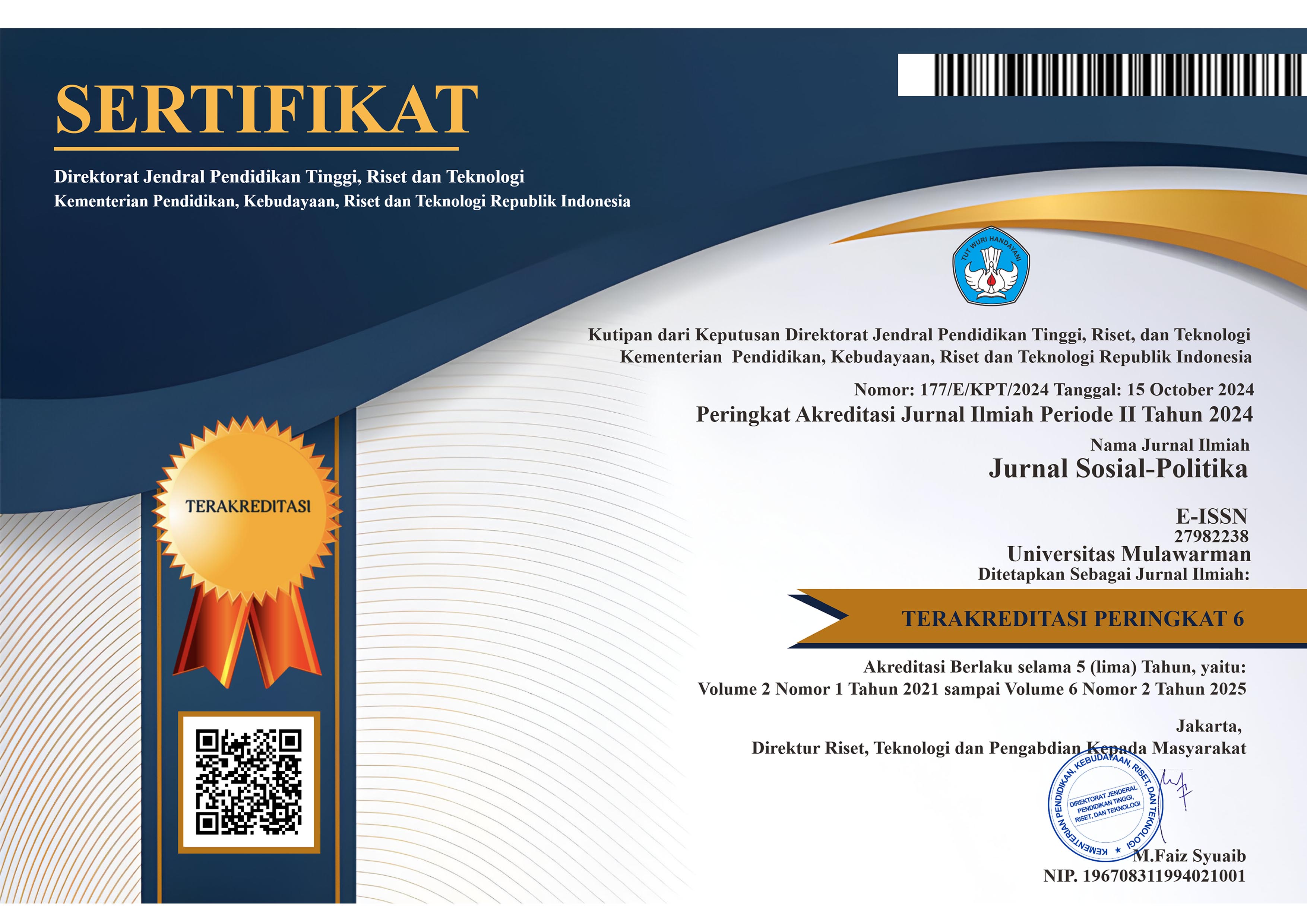
REFERENCE
Book with single author
Reference:
Bryman, A. (2012). Social Research Methods (4th ed.). Oxford University Press.
In-text: (Bryman, 2012)
Book with two authors
Reference:
Hood, C., & Lodge, M. (2006). The Politics of Public Service Bargains: Reward, Competency, Loyalty – and Blame. Oxford University Press.
In-text: (Hood & Lodge, 2006)
Book with three author or more
Reference:
Dwee, D., Dion, H. B., & Brown, I. S. (2012). Information behaviour concept: A basic introduction. University of Life Press.
In-text: (Dwee et al., 2012)
Chapter or Article in Edited Book
Reference:
Levi, M. (2009). Reconsiderations of Rational Choice in Comparative and Historical Analysis. In M.I. Lichbach & A.S. Zuckerman (Eds.), Comparative Politics. Rationality, Culture and Structure (pp. 117-133). Cambridge University Press.
In-text: (Levi, 2009)
Journal Article with DOI
Reference:
Yuniarti, et al. (2024). Management of Indonesia’s Boat People. Jurnal Sosial Humaniora, 15(2), 115-127. https://110.30997/jsh.v15i2.10067
In-text: (Yuniarti, 2024)
Journal Article with URL
Reference:
Muda, B.D., Srijaya, I.W., & Wardi, I.N. (2025). Pemaknaan Gir?ndrawardhana-L?ncana Prasasti Kembangsore Berdasarkan Pendekatan Semiotika Pierce. Jurnal Ilmiah Wahana Pendidikan. 11(3.A):76-86. https://jurnal.peneliti.net/index.php/JIWP/article/view/9999/8029
In-text: (Muda, et al, 2025)
Newspapers article
Reference:
Mahdawi, A. (2025, April 18). Why do Trump voters have no regrets? Because the people they hate are getting hurt more. The Guardian, pp.xx.
In-text: (Mahdawi, 2025)
Newspaper article with URL
Reference:
Anwar, L.A., (2025, January 8). Apa yang Diperoleh Indonesia dengan Bergabung BRICS?. Kompas.id. https://www.kompas.id/artikel/apa-yang-diperoleh-indonesia-dengan-bergabung-dengan-brics
In-text: (Anwar, 2025)
Website
Reference:
UNEP. (n.d). Sustainable Blue Economy. Retrieved April 18, 2025 from https://www.unep.org/topics/ocean-seas-and-coasts/ecosystem-based-approaches/sustainable-blue-economy
In-text: (UNEP, n.d)
Reference:
Sustainable Blue Economy. (n.d.). UNEP. Retrieved April 18, 2025 from https://www.unep.org/topics/ocean-seas-and-coasts/ecosystem-based-approaches/sustainable-blue-economy
In-text: (Sustainable Blue Economy, n.d)
Book translation
Reference:
Saint-Exupéry, A. d. (1970). The little prince (K. Woods, Trans.). Harcourt Brace & Co. (Original work published 1943)
In-text: (Saint-Exupéry, 1970)
Unpublished Thesis/Dissertation
Reference:
Lee, R. (2020). Model of Blue Economy Development [Unpublished MPA thesis]. University of Simple.
In-text: (Lee, 2020)
Published Thesis/Dissertation
Reference:
Lee, R. (2020). Model of Blue Economy Development (Thesis). Simple University Press.
In-text: (Lee, 2020)
| SERTIFIKAT |
|---|

| SOSIAL POLITIKA SECRETARIAT |
|---|
